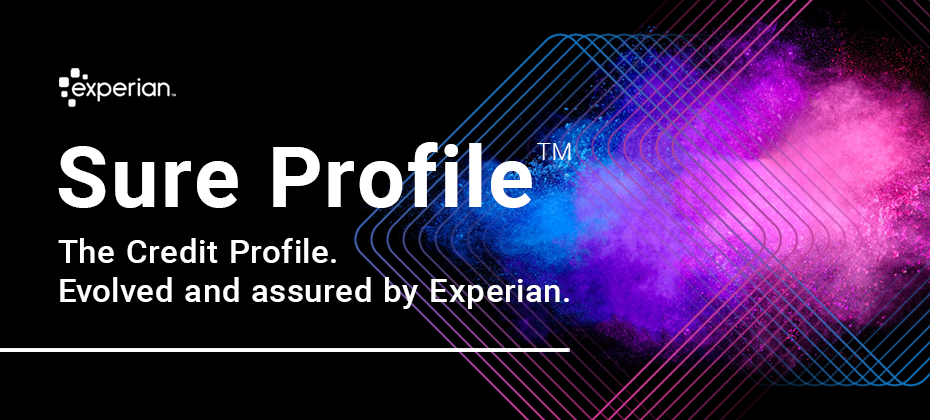Tag: credit risk

Experian’s newest Global Insights Report found that consumers are online 25% more today than they were just a year ago, highlighting the importance of the digital customer experience. To acquire customers and retain their loyalty, businesses need to focus on improving the online experience, preventing fraud, and managing credit risk. This September, Experian surveyed 3,000 consumers and 900 businesses across all industries to explore business priorities and recent changes in consumer activities. Many businesses and consumers are reportedly feeling more economically stable now than they were a year ago. As consumers resume spending the digital customer experience becomes even more paramount – requiring businesses to invest in scalable software solutions that will accurately assess credit risk and meet ever-changing needs and priorities. Our research found that: 42% of consumers have increased concern for the safety of banking and shopping transactions Business adoption of advanced analytics has increased over last year, and adoption of artificial intelligence is up from 69% to 74% Consumers are more likely to share their personal data if it improves their experience, with 56% willing to share their contact information The top three consumer priorities continue to be security, privacy and convenience Download the report to get all the latest insights into consumer desires and business behaviors as we move further through the digital evolution. Download the report

Experian recently announced that it has made the IDC 2021 Fintech Rankings Top 100, highlighting the best global providers of financial technology. Experian is ranked number 11, rising 33 places from its 2020 ranking. IDC also refers to Experian as a ‘rising star.’ The robust data assets of Experian, combined with best-in-class modeling, decisioning and technology are powering new and innovative solutions. Experian has invested heavily in new technologies and infrastructures to deliver the freshest insights at the right time, to make the best decision. For example, Experian's Ascend Intelligence Services™ provides data, analytics, strategy, and performance monitoring, delivered on a modern-tech AI platform. With the investment in Ascend Intelligence Services, Experian has been able to streamline the delivery speed of analytical solutions to clients, improve decision automation rates and increase approval rates, in some cases by double digits. “Recognition in the top 20 of IDC FinTech Rankings demonstrates Experian’s commitment to the success of its financial clients,” said Marc DeCastro, research director at IDC Financial Insights. “We congratulate Experian for being ranked 11th in the 2021 IDC FinTech Rankings Top 100 list.” View the IDC Fintech Rankings list in its entirety here. Focus on Data, Advanced Analytics and Decisioning Creates Winning Strategy for Experian Experian’s focus on data, advanced analytics and decisioning has continued to gain recognition from various notable programs that acknowledge Fintech industry leaders and breakthrough technologies worldwide. Beyond the IDC Fintech Rankings Top 100, Experian won honors from the 2021 FinTech Breakthrough Awards, the 2021 CIO 100 Awards and was most recently shortlisted in the CeFPro Global Fintech Leaders List for 2022 in the categories of advanced analytics, anti-fraud, credit risk and core banking/back-end system technologies. “At Experian, we are committed to supporting the Fintech community. It’s great to see our continued efforts and investments driving positive impacts for our clients and their consumers. We will continue to invest and innovate to help our clients solve problems, create opportunities and support their customer-first missions,” said Jon Bailey, Vice President for Fintech at Experian. Learn more about how Experian can help advance your business goals with our Fintech Solutions and Ascend Intelligence Services. Explore fintech solutions Learn more about AIS

As last year’s high-volume mortgage environment wanes, lenders are shifting focus to address another set of challenges. Continued economic uncertainty lingers as consumers navigate towards recovery. As such, mortgage lenders have less clarity than normal to assess risk and measure performance in their servicing portfolios. On top of that, more lenders are struggling with customer retention than ever before, due to a historically low rate environment in 2020. These combined factors create a new set of challenges servicers will face in the coming months. We explore a few of these challenges below. An incomplete picture of risk The CARES Act accommodation reporting structure has made it challenging for servicing teams to fully understand the impact of forbearance in their portfolios. If looking only at a CARES Act accommodated borrower’s credit profile, there is no indication whether that consumer would otherwise be delinquent or headed towards default. In turn, lenders cannot model out risk based on this information alone. Borrowers’ financial situations can still change rapidly, and some are still struggling to regain their financial footing. Property data also plays a part in a holistic view of risk. Partly due to lack of housing inventory, home equity continues to rise in many areas of the country, yet there is still uncertainty around whether prices are overinflated, whether the market will correct itself and by how much, and the impact the foreclosure moratorium may have on one’s portfolio. And property dynamics continue to change due to consumer migration stemming from the onset of virtual or hybrid work environments, where homeowners are less bound geographically to a place of work. Being able to have insight into a holistic view of risk is critical to navigating the upcoming months in mortgage servicing. Low borrower retention 2020’s prevailing low-rate environment continues to persist well into 2021 creating a big challenge for mortgage servicers in terms of borrower retention. Borrowers continue to be incentivized to refinance, and in some instances multiple times, to capture the savings throughout the life of their mortgage. Every time a borrower refinances, the lender who’s servicing the loan risks losing the borrower to another lender. This portfolio runoff can create losses for the lender; high portfolio run off rates have shown to negatively impact portfolio performance and investor credibility while increasing marketing cost for new customer acquisition. In our Mortgage in 2021 webinar, we point to the sheer magnitude of this – at the end of 2020, a whopping 33% of first mortgages were less than a year old. Additionally, with the uptick in the number of fintech mortgage lenders and aggregation websites, it has become increasingly easy for consumers to shop for alternative options. Being able to predict the consumers likely to refinance can help servicers retain existing customers and reduce losses. Lack of operational efficiency Lenders and servicers had to increase the capacity of their systems, oftentimes at the turn of a dime, due to last year’s record-breaking origination volumes. This led to massive growing pains while simultaneously stress-testing a company’s systems and processes. As a result, the overall cost to produce a mortgage has risen. Borrower data hygiene poses a challenge for many servicers as well. There was a lot of movement in 2020 in terms of mergers and acquisitions which may also affect servicers’ operational efficiency. Marrying several disparate data points during such events can lead to borrower data inconsistencies and duplicates across loan origination systems. And as consumers come out of forbearance or deferral status, servicers are managing more calls to their inbound call centers, increasing the scope of the problem. Having tools to ensure data accuracy and correct consumer contact information can help reduce operating cost. Conclusion There certainly is a lot of pressure on servicers to optimize and be in a position to efficiently help homeowners in need as forbearance and foreclosure moratoriums end. But with the right data, insights and partners, mortgage servicers can navigate these challenges all while managing risk and enabling the business to grow safely. In our next blog, we highlight what forward-thinking lenders and servicers are focusing on now to navigate the upcoming months in mortgage servicing. Learn more

The pandemic changed nearly everything – and consumer credit is no exception. Data, analytics, and credit risk decisioning are gaining an even more significant role as we grow closer to the end of the global crisis. Consumers face uneven roads to recovery, and while some are ready to spend again, others are still dealing with pandemic-related financial stress. We surveyed nearly 9,000 consumers and 2,700 businesses worldwide about how consumers are stabilizing their finances and businesses are returning to growth for our new Global Decisioning Report. In this report, we dive into: Key business priorities in 2021 Financial concerns for consumers How to navigate an uneven recovery Business priorities for the year ahead The importance of the online experience As we begin to near the end of the pandemic, businesses need to prioritize technology that enables a responsive, flexible, efficient and confident approach. This can be done by leveraging advanced data and analytics and integrating machine learning tools into model development. By investing in the right credit risk decisioning tools now, you can help ensure your future. Download the report

Experian is proud to announce, for the second year in a row, we have been named to the global Fintech Leaders list, placing in the top 20 for 2021. The list and adjoining report are released annually by international research organization, the Center for Financial Professionals (CeFPro). In addition to placing 19th on the list, Experian also placed in the Credit Risk category. The Center for Financial Professionals’ Fintech Leaders 2021 Report is one of the most rigorous programs that rank fintech industry leaders. The report’s coverage includes evaluating top fintech companies, solution providers, and vendors. The results are usually based on gathered surveys from end-users, practitioners, and subject matter experts. CeFPro’s report comes from the group’s market analysis and original research, which are backed by an advisory board that consists of 60 international industry professionals. Andreas Simou, CeFPro’s Managing Director, shared that the CeFPro board and voting members recognized Experian within the fintech survey as leaders for their data, decisioning and analytical capabilities. Simou said, "Experian cements its place on the Fintech Leaders List, and has once again been very highly regarded, as a leading player within credit risk, most notably for their subject-matter expertise and excelling within the areas of data management and modelling,” he said. “We are honored to once again be recognized as a Fintech Leader by CeFPro and the global Fintech marketplace,” said Jon Bailey, Vice President for Fintech at Experian. “We are committed to supporting the Fintech community and we will continue to invest and innovate to help our clients solve problems, create opportunities, and promote financial inclusion,” Bailey said.

Credit cards are the most widely available credit products offered to millions of consumers today. For many consumers, owning a credit card is a relatively simple step toward establishing credit history and obtaining access to other lending products later in life. For credit unions, offering a credit card to members expands and enriches the credit relationship. In today’s environment, some credit unions don’t view credit cards as an integral part of their member service. I propose that the benefits of credit cards in a credit union portfolio are impactful, meaningful and fully align to member outreach and community service. A high-level review of risk-adjusted yields across three of the most common retail products offered by credit unions show that credit cards can be very profitable. The average APR of credit cards as of Q3 2020 is just slightly below personal loans. While charge-offs as a percentage of balances are more than double of personal loans, the estimated risk-adjusted yield is still elevated and is 1.8 times higher than auto loan and leases. See Table 1. Table 1. Estimated average risk-adjusted yield for auto loan and lease, personal loan, and credit card for credit unions Auto loan and lease Personal loan Credit card Average APR 5.21% 12.05% 11.26% Charge-offs as % of balances (annualized) 0.28% 0.89% 1.98% Risk-adjusted yield 4.93% 11.16% 9.28% Notes: Average APR of auto loans and leases, personal loans, and charge-off information as of Q3 2020 was extracted from Experian-Oliver Wyman IntelliViewSM Market Intelligence Reports. IntelliView Market Intelligence Reports, Dec. 22, 2020, experian.com/decision-analytics/market-intelligence/intelliview. Average APR of credit card as of Q3 2020 was extracted from National Credit Union Administration website. Credit Union and Bank Rates 2020 Q3, Dec. 22, 2020, https://www.ncua.gov/analysis/cuso-economic-data/credit-union-bank-rates/credit-union-and-bank-rates-2020-q3. Estimated risk-adjusted yield is calculated as the difference between average APR and charge-offs. A profitable retail product allows a credit union to share those profits back with members consistent with its mission of promoting and supporting the financial health and well-being of its members. Credit cards provide diversification of income streams. Income diversification provides a level of stability across cyclical economic conditions when some types of credit exposures may perform poorly, while others may be more stable. When combined with sound and effective risk governance, credit diversification allows lenders to mitigate levels of concentration risks in their aggregate portfolio. Offering credit cards to members is one avenue to grow loan volume and achieve scale that’s sufficiently manageable for credit unions. Scale is particularly important today as it’s needed to fund technology investments. The pandemic accelerated the massive movement toward digital engagement, and scale makes technology investments more cost-effective. When lenders become more productive and efficient, they further lower the cost of credit products to members. (Stovall, Nathan. Dec. 14, 2020. Desire to compete with megabanks driving more U.S. regional bank M&A — KBW CE blog. https://platform.mi.spglobal.com/web/client?auth=inherit#news/.) The barriers to offering credit cards have moderately declined. Technology partners, payment processors and specialized industry companies are available in the marketplace. The biggest challenge for credit unions and lenders is credit risk management. To be profitable and to stay relevant, credit cards require a relatively sophisticated risk management framework of underwriting criteria, pricing, credit line management, operations and marketing. Industry and specialized support for launching and managing credit cards is widely available and accessible. Analytics play an essential role in managing credit cards. With an average active life of approximately five years, credit card portfolios need regular and periodic performance reviews to manage inherent risk and to identify opportunities for growth and profitability. Account management for credit cards is equally as important as underwriting. Credit line management, authorization, activation and retention have significant impact to the performance of existing accounts. Continuous engagement with members is critical and has taken on a new meaning lately. Credit cards provide an opportunity to engage members, to grow lending relationships and to support financial well-being. Marketing and meaningful card offers drive card usage and relevance. They’re critical components in customer communication and service. The benefits of credit cards contribute positively to a credit union portfolio. With sound and effective risk management practices, credit cards are profitable, help diversify income streams, grow loan volume and support member credit needs.

Despite the constant narrative around “unprecedented times” and the “new normal,” if the current market volatility tells us anything, it’s to go back to basics. As financial institutions navigate COVID-19’s economic impact, and challenges that are likely to be different or more extreme than in the past, the best credit portfolio management practices are fundamental. The global pandemic impacts today’s data as existing data and analytics may not accurately reflect what is happening now, resulting in inaccurate portfolio assessment. In order to successfully navigate loss forecasting, predicting borrower behavior and controlling loss ratios, lenders must engage new data, analytics and economic scenarios suited for today’s changing times. In Experian’s latest white paper, “Credit Portfolio Management After the COVID-19 Recession,” we’ll explore best practices to combat the following challenges: Forecasting credit losses despite increased economic volatility Businesses have long used a variety of data, analytics and models to anticipate and project the future direction of their organization based on a number of data points; however, with the onset of the global pandemic, long-standing scenarios became suddenly irrelevant. Predicting borrower behavior given increased financial disparities The post-pandemic and pre-pandemic worlds are very different places for some borrowers. Pandemic-related job losses and other economic effects will not be spread evenly and this variability may be reflected in lenders’ portfolios. Controlling loss ratios In the post-COVID world, it will be mission critical for lenders to use high-quality and up-to-date data to balance priorities and identify which areas of their portfolio need attention now. Whether your portfolio is doing better than expected, as expected, or worse than expected, now is the time to refresh portfolio management strategy. Lenders should be watching for early indicators in loan portfolios to better navigate a fluctuating economy and that requires new resources and better tools. Take control of your business’ trajectory. Download now

No two customers are the same. That’s why it’s important to go beyond the traditional credit score for a closer look at each consumer’s individual circumstance and create personalized response plans. Learn more about some of the many different customers you’ll encounter and download our guide to get recommendations for every stage of the lifecycle. Get the Guide

Intuitively we all know that people with higher credit risk scores tend to get more favorable loan terms. Since a higher credit risk score corresponds to lower chance of delinquency, a lender can grant: a higher credit line, a more favorable APR or a mix of those and other loan terms. Some people might wonder if there is a way to quantify the relationship between a credit risk score and the loan terms in a more mathematically rigorous way. For example, what is an appropriate credit limit for a given score band? Early in my career I worked a lot with mathematical optimization. This optimization used a software product called Marketswitch (later purchased by Experian). One caveat of optimization is in order to choose an optimal decision you must first simulate all possible decisions. Basically, one decision cannot be deemed better than another if the consequences of those decisions are unknown. So how does this relate to credit risk scores? Credit scores are designed to give lenders an overall view of a borrower’s credit worthiness. For example, a generic risk score might be calibrated to perform across: personal loans, credit cards, auto loans, real estate, etc. Per lending category, the developer of the credit risk score will provide an “odds chart;” that is, how many good outcomes can you expect per bad outcome. Here is an odds chart for VantageScore® 3 (overall - demi-decile). Score Range How Many Goods for 1 Bad 823-850 932.3 815-823 609.0 808-815 487.6 799-808 386.1 789-799 272.5 777-789 228.1 763-777 156.1 750-763 115.6 737-750 85.5 723-737 60.3 709-723 45.1 693-709 33.0 678-693 24.3 662-678 18.3 648-662 14.1 631-648 10.8 608-631 7.9 581-608 5.5 542-581 3.5 300-542 1.5 Per the above chart, there will be 932.3 good accounts for every one “bad” (delinquent) account in the score range of 823-850. Now, it’s a simple calculation to turn that into a bad rate (i.e. what percentage of accounts in this band will go bad). So, if there are 932.3 good accounts for every one bad account, we have (1 expected bad)/(1 expected bad + 932.3 expected good accounts) = 1/(1+932.3) = 0.1071%. So, in the credit risk band of 823-850 an account has a 0.1071% chance of going bad. It’s very simple to apply the same formula to the other risk bands as seen in the table below. Score Range How Many Goods for 1 Bad Bad Rate 823-850 932.3 0.1071% 815-823 609.0 0.1639% 808-815 487.6 0.2047% 799-808 386.1 0.2583% 789-799 272.5 0.3656% 777-789 228.1 0.4365% 763-777 156.1 0.6365% 750-763 115.6 0.8576% 737-750 85.5 1.1561% 723-737 60.3 1.6313% 709-723 45.1 2.1692% 693-709 33.0 2.9412% 678-693 24.3 3.9526% 662-678 18.3 5.1813% 648-662 14.1 6.6225% 631-648 10.8 8.4746% 608-631 7.9 11.2360% 581-608 5.5 15.3846% 542-581 3.5 22.2222% 300-542 1.5 40.0000% Now that we have a bad percentage per risk score band, we can define dollars at risk per risk score band as: bad rate * loan amount = dollars at risk. For example, if the loan amount in the 823-850 band is set as $10,000 you would have 0.1071% * $10,000 = $10.71 at risk from a probability standpoint. So, to have constant dollars at risk, set credit limits per band so that in all cases there is $10.71 at risk per band as indicated below. Score Range How Many Goods for 1 Bad Bad Rate Loan Amount $ at Risk 823-850 932.3 0.1071% $ 10,000.00 $ 10.71 815-823 609.0 0.1639% $ 6,535.95 $ 10.71 808-815 487.6 0.2047% $ 5,235.19 $ 10.71 799-808 386.1 0.2583% $ 4,147.65 $ 10.71 789-799 272.5 0.3656% $ 2,930.46 $ 10.71 777-789 228.1 0.4365% $ 2,454.73 $ 10.71 763-777 156.1 0.6365% $ 1,683.27 $ 10.71 750-763 115.6 0.8576% $ 1,249.33 $ 10.71 737-750 85.5 1.1561% $ 926.82 $ 10.71 723-737 60.3 1.6313% $ 656.81 $ 10.71 709-723 45.1 2.1692% $ 493.95 $ 10.71 693-709 33.0 2.9412% $ 364.30 $ 10.71 678-693 24.3 3.9526% $ 271.08 $ 10.71 662-678 18.3 5.1813% $ 206.79 $ 10.71 648-662 14.1 6.6225% $ 161.79 $ 10.71 631-648 10.8 8.4746% $ 126.43 $ 10.71 608-631 7.9 11.2360% $ 95.36 $ 10.71 581-608 5.5 15.3846% $ 69.65 $ 10.71 542-581 3.5 22.2222% $ 48.22 $ 10.71 300-542 1.5 40.0000% $ 26.79 $ 10.71 In this manner, the output is now set credit limits per band so that we have achieved constant dollars at risk across bands. Now in practice it’s unlikely that a lender will grant $1,683.27 for the 763 to 777 credit score band but this exercise illustrates how the numbers are generated. More likely, a lender will use steps of $100 or something similar to make the credit limits seem more logical to borrowers. What I like about this constant dollars at risk approach is that we aren’t really favoring any particular credit score band. Credit limits are simply set in a manner that sets dollars at risk consistently across bands. One final thought on this: Actual observations of delinquencies (not just predicted by the scores odds table) could be gathered and used to generate a new odds tables per score band. From there, the new delinquency rate could be generated based on actuals. Though, if this is done, the duration of the sample must be long enough and comprehensive enough to include both good and bad observations so that the delinquency calculation is robust as small changes in observations can affect the final results. Since the real world does not always meet our expectations, it might also be necessary to “smooth” the odds-chart so that its looks appropriate.

As industry experts are still unsure when the economy will fully recover, re-entry into marketing preapproved credit offers seems like a far-off proposal. However, several of the top credit card issuers are already mailing prescreen offers, with many other lenders following suit. When the time comes for organizations to resume, or even expand this type of targeting, odds are that the marketing budget will be tighter than in the past. To make the most of the limited available marketing spend, lenders will need to be more prescriptive with their selection process to increase response rates on fewer delivered offers. Choosing the best candidates to receive these offers, from a credit risk perspective, will be critical. With delinquencies being suppressed due to CARES Act reporting guidelines, identifying consumers with the ability to repay will require additional assessment of recent credit behavior metrics, such as actual payment amounts and balance migration. Along with the presence of explicit indicators of accommodated trades (trades affected by natural disaster, trades with a balance but no scheduled payment amount) on a prospect’s credit file, their recent trends in payments and balance shifts can be integral in determining whether a prospect has been adversely impacted by today’s economic environment. Once risk criteria have been developed using a mix of bureau scores (like the VantageScore® credit score), traditional credit attributes and trended attributes measuring recent activity, additional targeting will be critical for selecting a population that’s most likely to open the relevant trade type. For credit cards and personal installment loans, response performance can be greatly improved by aligning product offers with prospects based on their propensity to revolve, pay in full each month or consolidate balances. Additionally, the process to select final prospects should integrate a propensity to open/respond assessment for the specific offering. While many lenders have custom models developed on previous internal response performance, off-the-shelf propensity to open models are also available to provide an assessment of a prospect’s likelihood to open a particular type of trade in the coming months. These models can act as a fast-start for lenders that intend to develop internal custom models, but don’t have the response performance within a particular product/geography/risk profile. They are also commonly used as a long-term solution for lenders without an internal model development team or budget for an outsourced model. Prescreen selection best practices Identify geography and traditional credit risk assessment of the prospect universe. Overlay attributes measuring accommodated trades and recent payment/balance trends to identify prospects with indications of ability to pay. Segment the prospect universe by recent credit usage to determine products that would resonate. Make final selections using propensity to open model scores to increase response rates by only making offers to consumers who are likely looking for new credit offers. While the best practices listed above don’t represent a risk-free approach in these uncertain times, they do provide a framework for identifying prospects with mitigated repayment risk and insights into the appropriate credit offer to make and when to make it. Learn about in the market models Learn about trended attributes VantageScore® is a registered trademark of VantageScore Solutions, LLC.

Profitability analysis is one of the most powerful analytics tools in business and strategy development. Yet it’s underrated, deemed too complicated and often ignored. A chief lending officer may state that the goal of strategy development is to increase approvals or to reduce losses. Each one of these goals has an impact generally inversely on each other. That impact may be consequential, and evaluating the effects requires deeper thought and discipline. I propose that the benefits of a profitability analysis in strategy development are worth the additional effort, time and cost. Profitability analysis provides a disciplined framework for making business decisions. For financial companies, a simple profit and loss (P&L) statement will identify interest income, subtract losses and arrive at a risk-adjusted yield. A more robust P&L statement will include interest expense, loss reserves, recovery, fees and other income, operating expenses, other cost per account, and net income. Whether simplified or fully loaded, a P&L analysis used in strategy development must provide a clear and informative representation of key performance metrics and risks. The most important benefit of a profitability analysis is its inherent ability to quantify the trade-offs between risk and rewards. In the P&L terminology, we mean the trade-off between expenses and revenue or losses and interest income. Understanding trade-offs allows companies to make informed decisions and explore serious alternatives. The net income is a concise and elegant metric that captures the impact of various and sometimes competing business objectives. Consider different divisions within a financial organization. Each division has its own specific and measurable objective. Marketing’s goal is to increase loan approvals while Risk is tasked with managing losses. Operations looks to improve efficiencies while IT aims to provide stable, reliable and accurate systems infrastructure. Legal and Compliance ensure regulatory compliance across the entire organization. Each division working to achieve its objectives creates externalities — each division’s actions may not fully incorporate costs imposed on other divisions. For example, targeting highly responsive consumers for a loan product achieves higher loan approvals and may in turn lead to higher credit risk losses. A P&L analysis imposes the discipline for each division to internalize costs and lead to a favorable and efficient outcome for the organization. The challenge with profitability analysis in strategy development is how to develop a good P&L statement. We look to historical data to define assumptions and calibrate inputs to the P&L. There will be uncertainty and concerns regarding the reliability and quality of such data. Organizations don’t regularly conduct test and control experiments or champion and challenger strategies that provide actual performance information on specific areas of studies. Though imperfect, historical data provides a starting foundation for profitability analysis. We augment historical data with predictive credit attributes, industry experience and understanding consumer behavior and incentives. For example, to estimate interest income we may utilize estimated interest rates combined with balance propensity behavior, such as a balance revolver or transactor. To estimate losses on declined population that may be considered for approval, we infer on-us performance using off-us performance with other lenders. Defining assumptions is tedious, hard work and full of uncertainty. This exercise once again imposes the discipline required of organizations to know in detail the characteristics of their products and businesses that make them relevant to consumers. We generate P&L simulations using a set of assumptions, acknowledge the data limitations and evaluate recommendations. A profitability analysis is useful in both times of economic expansion and contraction. A P&L analysis is valuable when evaluating strategies across the customer life cycle. Remember, we live in a world of trade-offs and choices are inevitable. In the prospecting and acquisition life cycle, a P&L analysis provides insights on approval expansion and the consequences of higher credit losses. Alternatively, tighter lending criteria will have a direct impact on balance growth and interest income with lower losses. In account management, a P&L analysis provides estimates on expanded account authorization limits and the effect on activation and usage. In collections, a P&L analysis provides valuation on recoveries and operational costs. These various assessments are quantified in the P&L and allows the organization to identify other mechanisms such as marketing campaigns, customer services or technology investments in support of the organization’s goals and mission. Organizations face a full spectrum of opportunities and risks. We propose a profitability analysis to evaluate business trade-offs, navigate the marketplace, and continue to provide relevant financial products and services to consumers and businesses. Learn more

The COVID-19 pandemic created a global shift in the volume of online activity and experiences over the past several months. Not only are consumers increasing their usage of mobile and digital channels to bank, shop, work and socialize — and anticipating more of the same in the coming months — they’re closely watching how businesses respond to their needs. Between late June and early July of this year, Experian surveyed 3,000 consumers and 900 businesses to explore the shifts in consumer behavior and business strategy pre- and post-COVID-19. More than half of businesses surveyed believe their operational processes have mostly or completely recovered since COVID-19 began. However, many consumers fear that a second wave of COVID-19 will further deplete their already strained finances. They are looking to businesses for reassurance as they shift their behaviors by: Reducing discretionary spending Building up emergency savings Tapping into financial reserves Increasing online spending Moving forward, businesses are focusing on short-term investments in security, managing credit risk with artificial intelligence, and increasing online customer engagement. Download the full report to get all of the insights into global business and consumer needs and priorities and keep visiting the Insights blog in the coming weeks for a deeper dive into US-specific findings. Download the report

In today’s uncertain economic environment, the question of how to reduce portfolio volatility while still meeting consumers’ needs is on every lender’s mind. With more than 100 million consumers already restricted by traditional scoring methods used today, lenders need to look beyond traditional credit information to make more informed decisions. By leveraging alternative credit data, you can continue to support your borrowers and expand your lending universe. In our most recent podcast, Experian’s Shawn Rife, Director of Risk Scoring and Alpa Lally, Vice President of Data Business, discuss how to enhance your portfolio analysis after an economic downturn, respond to the changing lending marketplace and drive greater access to credit for financially distressed consumers. Topics discussed, include: Making strategic, data-driven decisions across the credit lifecycle Better managing and responding to portfolio risk Predicting consumer behavior in times of extreme uncertainty Listen in on the discussion to learn more. Experian · Effective Lending in the Age of COVID-19

To combat the growing threat of synthetic identity fraud, Experian recently announced the launch of Sure ProfileTM, a revolutionary change to the credit profile that gives lenders peace of mind with Experian’s commitment to share in losses that result from an identity we’ve assured. “Experian has always been a leader in combatting fraud, and with Sure Profile, we’re proud to deliver an industry-first fraud offering integrated into the credit profile that mitigates lender losses while protecting millions of consumers’ identities,” said Robert Boxberger, President of Decision Analytics, Experian North America. Synthetic identity fraud is expected to drive $48 billion in annual online payment fraud losses by 2023. Between opportunistic fraudsters and a lack of a unified definition for synthetic identity theft it can be nearly impossible to detect—and therefore prevent—this type of fraud. This breakthrough solution provides a composite history of a consumer’s identification, public record, and credit information and determines the risk of synthetic fraud associated with that consumer. It’s not just a fraud tool, it’s a comprehensive credit profile that utilizes premium data so lenders can make positive credit decisions. Sure Profile leverages the capabilities of the Experian Ascend Identity PlatformTM and uses Experian’s industry-leading data assets and data quality to drive advanced analytics that set a higher level of protection for lenders. It’s powered by newly-developed machine learning and AI models. And it offers a streamlined approach to define and detect synthetic identities early in the originations process. Most importantly, Sure Profile differentiates between real people and potentially risky applicants so lenders can increase application approvals with greater assurance and less risk. “Experian can confidently define and help detect synthetic fraud. That's why we can help stop it,” said Craig Boundy, CEO of Experian North America. “Experian stands behind our data with assurance given to our clients. It’s better for lenders and it’s better for consumers.” Sure Profile is a complement to our robust set of identity protection and fraud management capabilities, which are designed to address fraud and identity challenges including account openings, account takeovers, e-commerce fraud and more. This first-of-its kind profile is the future of underwriting and portfolio protection and it’s here now. Read press release Learn More About Sure Profile

This is the third in a series of blog posts highlighting optimization, artificial intelligence, predictive analytics, and decisioning for lending operations in times of extreme uncertainty. The first post dealt with optimization under uncertainty and the second with predicting consumer payment behavior. In this post I will discuss how well credit scores will work for consumer lenders during and after the COVID-19 crisis and offer some recommendations for what lenders can be doing to measure and manage that model risk in a time like this. Perhaps no analytics innovation has created opportunity for more individuals than the credit score has. The first commercially available credit score was developed by MDS (now part of Experian) in 1987. Soon afterwards FICO® popularized the use of scores that evaluate the risk that a consumer would default on a loan. Prior to that, lending decisions were made by loan officers largely on the basis on their personal familiarity with credit applicants. Using data and analytics to assess risk not only created economic opportunity for millions of borrowers, but it also greatly improved the financial soundness of lending institutions worldwide. Predictive models such as credit scores have become the most critical tools for consumer lending businesses. They determine, among other things, who gets a loan and at what price and how an account such as a credit line is managed through its life cycle. Predictive models are in many cases critical for calculating loan and loss reserves, for stress testing, and for complying with accounting standards. Nearly all lenders rely on generic scores such as the FICO® score and VantageScore® credit score. Most larger companies also have a portfolio of custom scorecards that better predict particular aspects of payment behavior for the customers of interest. So how well are these scorecards likely to perform during and after the current pandemic? The models need to predict consumer credit risk even as: Nearly all consumers change their behaviors in response to the health crisis, Millions of people—in America and internationally—find their income suddenly reduced, and Consumers receive large numbers of accommodations from creditors, who have in turn temporarily changed some of their credit reporting practices in response to guidelines in the federal CARES Act. In an earlier post, I pointed out that there is good reason to believe that credit scores will tend to continue to rank order consumers from most likely to least likely to repay their debts even as we move from the longest economic expansion in history to a period of unforeseen and unexpected challenges. But the interpretation of the score (for example, the log odds or the bad rate) may need to be adjusted. Furthermore, that assumes that the model was working well on a lender’s population before this crisis started. If it has been a long time since a scorecard was validated, that assumption needs to be questioned. Because experts are considering several different scenarios regarding both the immediate and long-term economic impacts of COVID-19, it’s important to have a plan for ongoing monitoring as long as necessary. Some lenders have strong Model Risk Management (MRM) teams complying with requirements from the Federal Reserve, Federal Deposit Insurance Corporation (FDIC), the Office of the Comptroller of the Currency (OCC). Those resources are now stretched thin. Other institutions, with fewer resources for MRM, are now discovering gaps in their model inventories as they implement operational changes. In either case, now’s the time to reassess how well scorecards are working. Good model validation practices are especially critical now if lenders are to continue to make the sound data-driven decisions that promote fairness for consumers and financial soundness for the institution. If you’re a credit risk manager responsible for the generic or custom models driving your lending, servicing, or capital allocation policies, there are several things you can do--starting now--to be sure that your organization can continue to make fair and sound lending decisions throughout this volatile period: Assess your model inventory. Do you have good documentation showing when each of the models in your organization was built? When was it last validated? Assign a level of criticality to each model in use. Starting with your most critical models, perform a baseline validation to determine how the model was performing prior to the global health crisis. It may be prudent to conduct not only your routine validation (verifying that the model was continuing to perform at the beginning of the period) but also a baseline validation with a shortened performance window (such as 6-12 months). That baseline validation will be useful if the downturn becomes a protracted one—in which case your scorecard models should be validated more frequently than usual. A shorter outcome window will allow a timelier assessment of the relationship between the score and the bad rate—which will help you update your lending and servicing policies to prevent losses. Determine if any of your scorecards had deteriorated even before the global pandemic. Consider recalibrating or rebuilding those scorecards. (Use metrics such as the Population Stability Index, the K-S statistic and the Gini Coefficient to help with that decision.) Many lenders chose not to prioritize rebuilding their behavioral scorecards for account management or collections during the longest period of economic growth in memory. Those models may soon be among the most critical models in your organization as you work to maintain the trust of your accountholders while also maintaining your institution’s financial soundness. Once the CARES accommodation period has expired, it will be important to revalidate your models more frequently than in the past—for as long as it takes until consumer behavior normalizes and the economy finds its footing. When you find it appropriate to rebuild a scorecard model, consider whether now is the time to implement ethical and explainable AI. Some of our clients are finding that Machine Learned models are more predictive than traditional scorecards. Early Experian research using data from the last recession indicates this will continue to be true for the foreseeable future. Furthermore, Experian has invested in Research and Development to help these clients deliver FCRA-compliant Adverse Action reasons to their consumers and to make the models explainable and transparent for model risk governance and compliance purposes. The sudden economic volatility that has resulted from this global health crisis has been a shock to all organizations. It is important for lenders to take the pulse of their predictive models now and throughout the downturn. They are especially critical tools for making sound data-driven business decisions until the economy is less volatile. Experian is committed to helping your organization during times of uncertainty. For more resources, visit our Look Ahead 2020 Hub. Learn more